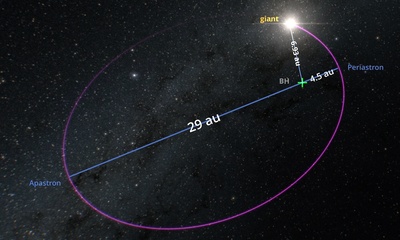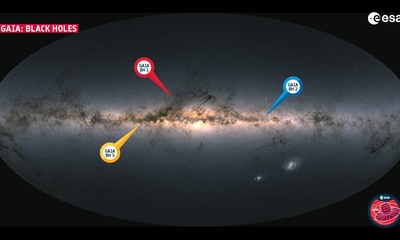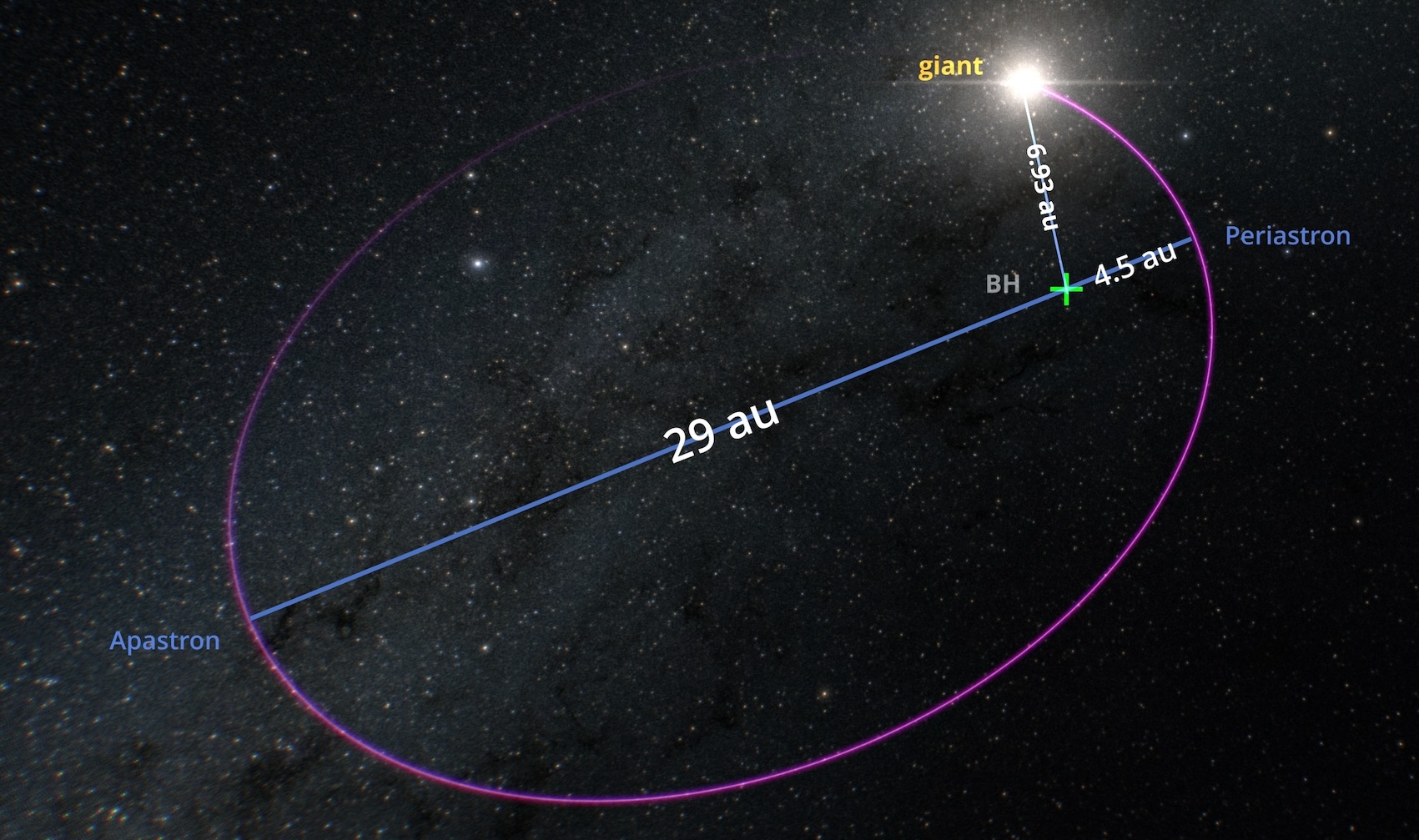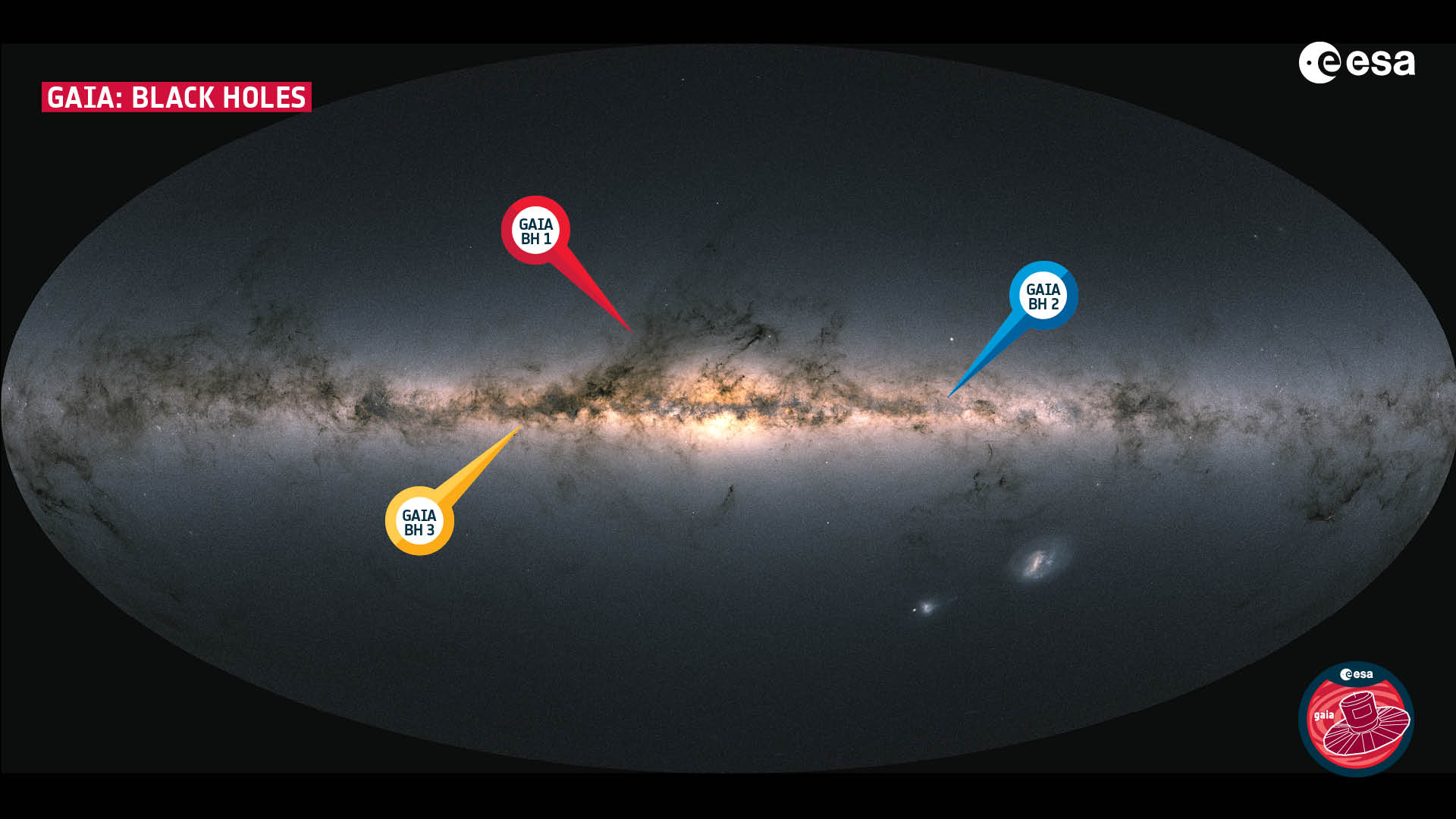Discovery of the most massive stellar black hole in our Galaxy to date
Associate of the Center for Astrophysics and Cosmology and professor of astronomy at the School of Science of the University of Nova Gorica, Dr. Andreja Gomboc, was part of the team that discovered the most massive stellar black hole in our Galaxy to date using the European Space Agency's Gaia satellite.
The discovery of a black hole with 33 solar masses located in the direction of the Aquila constellation, about 2,000 light-years away from Earth, was announced today by the Gaia Data Processing and Analysis Consortium in the prestigious scientific journal Astronomy and Astrophysics.
The lead author is Pasquale Panuzzo from the Paris Observatory, while the approximately 400-strong team of co-authors includes Prof. Dr. Andreja Gomboc from the University of Nova Gorica and Prof. Dr. Tomaž Zwitter from the University of Ljubljana. Andreja Gomboc has been participating in the Gaia mission since its planning phase in 2002. For the last two years, the University of Nova Gorica has been leading the European Space Agency's GAME - Gaia Astrometric Microlensing Events project that is developing a method to detect such objects in the data of the Gaia satellite based on the effect of gravitational lensing on the changing position of stars in the sky.
The new discovery of a black hole is important because it is the most massive black hole in our Galaxy, which was formed from a star (a large more massive black hole with a mass of 4 million solar masses is located in the centre of the Galaxy). The newly discovered black hole with 33 Sun masses falls in the class of black holes that have so far only been detected by the LIGO and Virgo gravitational wave detectors when two black holes in another galaxy merged into a larger one (for which the Nobel Prize in physics was awarded in 2017). The present case, however, involves the discovery of such a massive black hole by observing the motion of an ordinary star, the black hole's companion star, in visible light. Another important consideration is that this black hole is located in our Galaxy, practically in our galactic backyard, only 2000 light-years away from us, and researchers can therefore determine the properties of this pair of stars and black holes.
The discoveries of stellar black holes with masses of several tens of solar masses made by gravitational wave detectors were a big surprise and raised a lot of questions about their formation. The fact that the companion star of the newly discovered black hole is a star with a low content of chemical elements heavier than hydrogen and helium supports the interpretation that such massive black holes are formed from very massive stars that are low in these elements (and did not form, for example, as the so-called primordial black holes in the very early universe).
It is also interesting that this system - black hole and companion star - is on an unusual, retrograde orbit through our Galaxy indicating that it belongs to a group of stars that came from outside and was captured by our Galaxy about 8 billion years ago.
The discovered black hole, despite having much greater mass than our Sun, is very small in astronomical terms: it has a diameter of only 200 km, which is 7000 times smaller than the diameter of the Sun.
Astronomers hope that further analysis of data from the Gaia satellite will enable them to discover even more black holes of similar size in our galactic neighbourhood.




